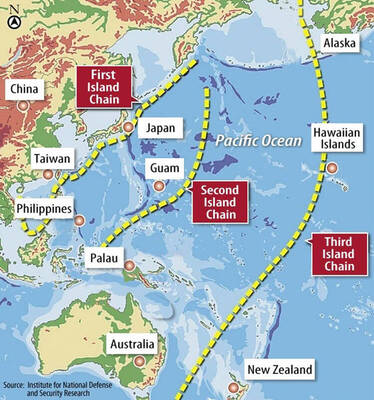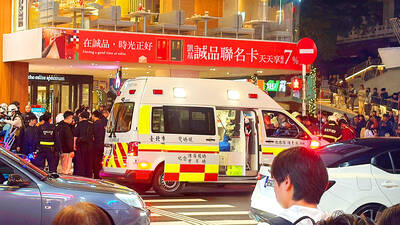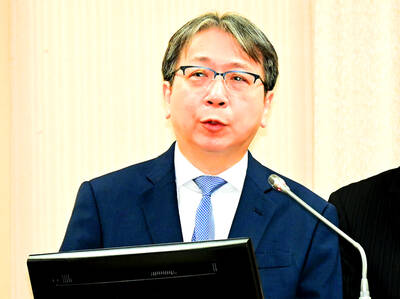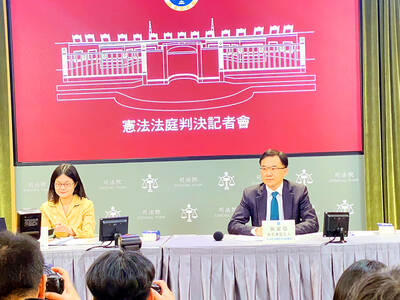China's military modernization and accelerating missile deployments across the Taiwan Strait could indicate an increased willingness to attack Taiwan, the Pentagon warned Wednesday.
While increased economic ties could ease tensions, cross-strait relations will remain sensitive "and could quickly deteriorate if either side perceives that the other has made a provocative statement or action," the Pentagon said in its latest annual report to Congress on China's military power.
"The PRC's ambitious military modernization casts a cloud over its declared preference for resolving differences with Taiwan through peaceful means," the report said.
The report said that China now has 450 short-range ballistic missiles in its Nanjing Military Region aimed at Taiwan, and is expected to add 75 a year for the next several years. If that prediction pans out, the number of missiles could double before the end of the decade.
In addition, the accuracy and lethality of the missile force is increasing, and the People's Liberation Army is developing variants of the CSS-6 missile that could allow them to be deployed further inland.
The 52-page report also warns that China's air force modernization is beginning to erode Taiwan's military superiority. China will eventually have a greater number of modern fighters than Taiwan and its missile force could be used to disrupt and soften Taiwan's air defenses.
"Over the next several years, given current trends, China likely will be able to cause significant damage to all of Taiwan's airfields and quickly degrade Taiwan's ground-based air defenses and associated command and control through a combination of SRBMs [short-range ballistic missiles], LACMs [land-attack cruise missiles], anti-radiation weapons, SOF [special operations forces], and other assets, unless Taiwan undertakes the defensive upgrades needed and to which it is committed," the Pentagon said.
"The PLA's offensive capabilities improve as each year passes, providing Beijing, in the absence of an effective response by Taiwan, with an increasing number of credible military options to intimidate or actually attack Taiwan," the report said.
China's military spending will double between 2000 and 2005, the Pentagon projects. It estimates that current defense spending may be three times the officially announced US$20 billion.
"Should China use force, its primary goal likely would be to compel a negotiated solution on terms favorable to Beijing. Beijing would most likely seek a rapid collapse of Taiwan's national will to preclude the US from intervening on Taipei's behalf," the report said.
Taiwan's susceptibility to coercion from threats depends on many factors, the Pentagon calculated. Perhaps the most important, it said, "is the degree to which Taiwan's leaders and populace perceive themselves to be different and separate from the mainland. Will they perceive that there is something real and significant to be protected by resisting the PLC?" the authors ask.
Other factors include Taiwan's assessment of the US and international reaction, the nature of Beijing's demands, Taiwan's military capabilities and the ability of Taiwan's leaders to "forge and maintain a consensus" among the nation's government and people.
While the report spoke favorably about Taiwan's efforts to reform its military, particularly through the two defense reform laws passed in January 2000, it expressed concern over declining defense spending.
"The defense budget's steady decline as a percentage of total government spending increasingly will challenge Taiwan's force modernization," it said.
Taiwan's army "still has major shortcomings as a fighting force," the report said. Despite its strengths, the navy's operations are not well integrated with the army's or air force's and suffers from an inability to conduct multiple missions at the same time. While air force personnel are "highly professional and hard-working," the report says they are overworked and some key pilot training is lacking.
Over the past year, the Pentagon notes, Beijing has toned down its Taiwan rhetoric, stressing its readiness to boost cross-strait ties.
The approach suggests that China wants "to appear to be the party willing to negotiate and to court public opinion in Taiwan, without making substantive compromises" in its Taiwan policy.
"Debate in Beijing over the more coercive options may wane in the run-up to [President] Chen [Shui-bian (

The US government has signed defense cooperation agreements with Japan and the Philippines to boost the deterrence capabilities of countries in the first island chain, a report by the National Security Bureau (NSB) showed. The main countries on the first island chain include the two nations and Taiwan. The bureau is to present the report at a meeting of the legislature’s Foreign Affairs and National Defense Committee tomorrow. The US military has deployed Typhon missile systems to Japan’s Yamaguchi Prefecture and Zambales province in the Philippines during their joint military exercises. It has also installed NMESIS anti-ship systems in Japan’s Okinawa

TRAGEDY STRIKES TAIPEI: The suspect died after falling off a building after he threw smoke grenades into Taipei Main Station and went on a killing spree in Zhongshan A 27-year-old suspect allegedly threw smoke grenades in Taipei Main Station and then proceeded to Zhongshan MRT Station in a random killing spree that resulted in the death of the suspect and two other civilians, and seven injured, including one in critical condition, as of press time last night. The suspect, identified as a man surnamed Chang Wen (張文), allegedly began the attack at Taipei Main Station, the Taipei Fire Department said, adding that it received a report at 5:24pm that smoke grenades had been thrown in the station. One man in his 50s was rushed to hospital after a cardiac arrest

ON ALERT: Taiwan’s partners would issue warnings if China attempted to use Interpol to target Taiwanese, and the global body has mechanisms to prevent it, an official said China has stationed two to four people specializing in Taiwan affairs at its embassies in several democratic countries to monitor and harass Taiwanese, actions that the host nations would not tolerate, National Security Bureau (NSB) Director-General Tsai Ming-yen (蔡明彥) said yesterday. Tsai made the comments at a meeting of the legislature’s Foreign Affairs and National Defense Committee, which asked him and Minister of National Defense Wellington Koo (顧立雄) to report on potential conflicts in the Taiwan Strait and military preparedness. Democratic Progressive Party (DPP) Legislator Michelle Lin (林楚茵) expressed concern that Beijing has posted personnel from China’s Taiwan Affairs Office to its

‘ILLEGAL RULING’: The KMT and the TPP slammed the Constitutional Court judgement, saying it contravened the law and was trying to clear the way for a ‘green dictatorship’ The Constitutional Court yesterday ruled that amendments to the Constitutional Court Procedure Act (憲法訴訟法) passed by the Legislative Yuan last year are unconstitutional, as they contravene due legislative process and separation of powers. The Legislative Yuan on Dec. 20 last year passed amendments stipulating that no fewer than 10 grand justices must take part in deliberations of the Constitutional Court, and at least nine grand justices must agree to declare a law unconstitutional. The Executive Yuan on Jan. 2 requested that lawmakers reconsider the bill, but the Legislative Yuan, under a combined majority of Chinese Nationalist Party (KMT) and Taiwan People’s Party